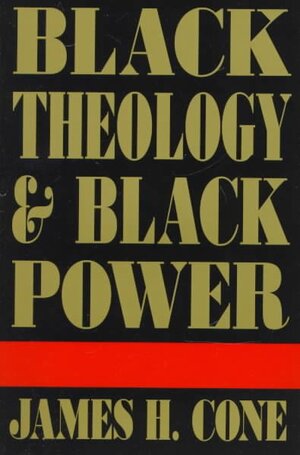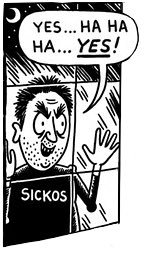Miguel de Cervantes Saavedra was a Spanish writer widely regarded as the greatest writer in the Spanish language and one of the world's pre-eminent novelists. He is best known for his novel Don Quixote, a work often cited as both the first modern novel and one of the pinnacles of world literature. He was born this day in 1547.
No authenticated image of Cervantes exists. He wanted a now-lost portrait by Juan de Jáuregui used as a frontispiece of his Exemplary Novels. Since the publisher would not pay for the engraving this would require, Cervantes supplied in its place a description of himself:
This person whom you see here, with an oval visage, chestnut hair, smooth open forehead, lively eyes, a hooked but well-proportioned nose, and silvery beard that twenty years ago was golden, large moustache, small mouth, teeth not much to speak of, for he has only six, in bad condition and worse placed, no two of them corresponding to each other, a figure midway between the two extremes, neither tall nor short, a vivid complexion, rather fair than dark, somewhat stooped in the shoulders, and not very lightfooted.
Much of his life was spent in poverty and obscurity, while the bulk of his surviving work was produced in the three years preceding his death, when he was supported by the Count of Lemos and did not have to work. Despite this, his influence and literary contribution are reflected by the fact that Spanish is often referred to as "the language of Cervantes".
In 1569, Cervantes was forced to leave Spain and moved to Rome, where he worked in the household of a cardinal. In 1570, he enlisted in a Spanish Navy infantry regiment, and was badly wounded at the Battle of Lepanto in October 1571. He served as a soldier until 1575, when he was captured by Barbary pirates; after five years in captivity, he was ransomed, and returned to Madrid.
His first significant novel, titled La Galatea, was published in 1585, but he continued to work as a purchasing agent, then later a government tax collector. Part One of Don Quixote was published in 1605, Part Two in 1615. Other works include the 12 Novelas ejemplares (Exemplary Novels); a long poem, the Viaje del Parnaso (Journey to Parnassus); and Ocho comedias y ocho entremeses (Eight Plays and Eight Entr'actes). Los trabajos de Persiles y Sigismunda (The Travails of Persiles and Sigismunda), was published posthumously in 1616.
Comprehensive list of resources for those in need of an abortion :feminism:
Resources for Palestine :palestine-heart:
Here are some resourses on Prison Abolition :brick-police:
Foundations of Leninism :USSR:
:lenin-shining: :unity: :kropotkin-shining:
Anarchism and Other Essays :ancom:
Remember, sort by new you :LIB:
Follow the Hexbear twitter account :comrade-birdie:
THEORY; it’s good for what ails you (all kinds of tendencies inside!) :RIchard-D-Wolff:
COMMUNITY CALENDAR - AN EXPERIMENT IN PROMOTING USER ORGANIZING EFFORTS :af:
Come listen to music with your fellow Hexbears in Cy.tube :og-hex-bear:
Queer stuff? Come talk in the Queer version of the megathread ! :sicko-queer:
Monthly Neurodiverse Megathread and Monthly ND Venting Thread :Care-Comrade:
Join the fresh and beautiful batch of new comms:
!labour@hexbear.net :iww:
!emoji@hexbear.net :meow-anarchist: :meow-tankie:
!libre@hexbear.net :libretion:
So two winners @CopsDyingIsGood and @LeninWeave so :rat-salute: to you both.
Previous answer
It will be noon in fifteen minutes
To 100
Using 0 through 9 once each, form two numbers - each an integer with a proper fraction - that add to 100.
Smartest smarty pants will be deemed based on number of solutions provided but even if you just get you will still get a mention.
Like usual have fun :soviet-heart: and remember to dm @Wmill the answer.
Read the post title closely
@Kanna @PurrLure @comi @Lenins2ndAccount @REallyN @DashEightMate @CARCOSA @DeathToBritain @TheGhostOfTomJoad @SorosFootSoldier @PM_ME_YOUR_FOUCAULTS @DasKarlBarx @marxisthayaca @bbnh69420 @Koa_lala @clover @GalaxyBrain @viva_la_juche @Rem @MaybeNickCage @Wmill @riffraff_diktat @Shitbird @inshallah2 @JamesConeZone @Abraxiel @aaaaaaadjsf @ella @FunkyStuff @el_principito @LeftistJerrySeinfeld@renamon @Arahnya @ComradeCmdrPiggy @Ossay @Sandinband @Zoift @PorkrollPosadist @CDommunist @plantifa @Grownbravy @RoseColoredVoid @ClimateChangeAnxiety @CopsDyingIsGood @EmmaGoldman @wtypstanaccount04 @Eco @Lydia @thelastaxolotl
All of you, every one of you, are damn nerds.
:posting: NOW POST :posting:
spoiler
But I think being a nerd's a good thing :stalin-approval:
:shrug-outta-hecks: I didn't want to do a depressing mega topic about a failed socialist revolution or something
:shrug-outta-hecks: you could also have posted it on !literature@hexbear.net instead of c/history
Well, I figured that was more for the actual books and discussions than the actual writers
If I'm part of the megathread excess posters now at least come vibe in cytube w/ me
it's like the mega but you get to fight with @Mabbz about various things :meow-tableflip:, listen to music, watch dope Mabbz promos, watch cool anime, watch movies, watch train videos :traingang:, spam chat until mabbz tells u to stop, call people feds, post toast sandwiches, and watch all your comments disappear (unless they get screenshotted).
:posting: Here Harpocras has had a good fuck with Drauca for a denarius. :posting:
Lol. I was trying to decide which book to read on Spanish and it was Moby Dick vs. Don Quixote.
Seeing a slug on the sidewalk: :quagsire-pog:
Seeing another one that got stepped on: :sadness-abysmal:
Friendly reminder that the Gates divorce is just a cover for consolidating assets in the face of delusional financial markets. Any attempt by Melinda to distance herself from Epstein & Bill is a secondary consideration.
Just remembered a true story told to me by my old store manager:
He worked at KFC as a teen and they made his friend stand on a wooden stool and clean the vent above the turned-on deep fryers.
I think you can imagine how it ends.
spoiler
His foot slipped on the stool, he put his arm out to catch himself, dunked it in the fryer, then flung his arm out and flicked fried skin in an arc pattern all over the wall/ceiling. Then he passed out. Then he got a million dollars probably
Can my husband/wife just show up already so I can cook soup for them every night. :shatter:
Just found out some cats sleep totally flat on their belly with their faces smooshed into the floor, I'm looking at pictures and it's sooooo cute/funny
19 of Facebook’s top 20 pages for American Christians are run by Eastern European troll farms overseas, internal documents leaked to MIT Technology Review
lmao
just found out /r/menfightingwomen exists. reddit loves to watch guys hit women
I just got Maurice to convert to Islam live on stream
It’s amazing how quickly the conservative moment has removed themselves of having any interest in policy. It’s 100% grievance/cultural BS now.
When was the last time you heard a conservative complain about high taxes?











